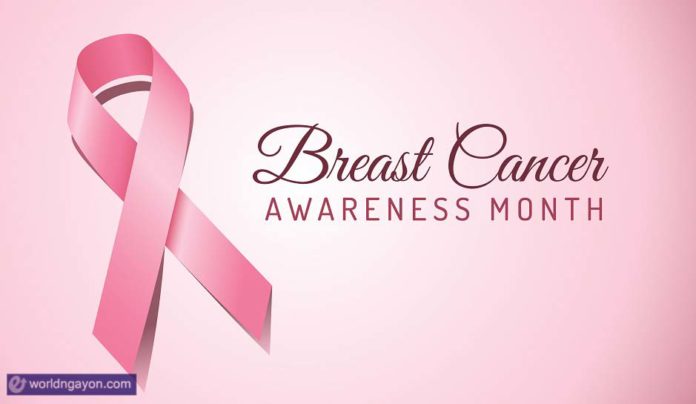WorldNgayon — In 2017, the American Cancer Society estimates more than 250,000 new cases of breast cancer will be diagnosed in the United States, with more than 40,000 deaths. But progress in treatment and early detection has led to improved survival rates, with more than 3 million breast cancer survivors in the U.S. today.
Also read: Making Cancer Less Cancerous
Breast Cancer Awareness Month
With October marking National Breast Cancer Awareness Month, Anees Chagpar, MD, MPH, a breast cancer expert and assistant director for Global Oncology at Yale Cancer Center, sorts out the facts about breast cancer and offers simple ways to reduce risk.
Know the risk factors
The two main risk factors for developing breast cancer are being a woman and getting older. Other important risk factors for breast cancer include family history of the disease, and inherited changes or mutations to certain genes, such as BRCA1 and BRCA2. “These risk factors for breast cancer are beyond your control,” said Chagpar. “However, there are risk factors you can control, such as watching your weight, being physically active, and limiting alcohol consumption.”
Also read:Exercise-related Changes in Estrogen Metabolism May Lower Breast Cancer Risk
Know the warning signs
The warning signs of breast cancer are not the same for all women. Most commonly, breast cancer is asymptomatic, and often appears on a mammogram before a lump can be felt. There are, however, other red flags. Also look for skin changes – redness, thickening of the skin. Other breast cancer warning signs include nipple discharge. It is also important to note that most breast cancers are not tender; and most painful breast masses don’t hurt. If you’re concerned, you should see your doctor.
Also read: Coffee may help prevent breast cancer returning, study finds
Mammograms save lives
Due to mammography screening, most breast cancers in the U.S. are found at an early stage. However, there has been a great deal of controversy about the value of performing a routine self-breast exam. Self-breast exams help women be familiar with their breasts so they are better able to notice a lump or any other changes. But randomized controlled trials have found that mammograms actually improve survival. Professional organizations vary in terms of their recommendations with regards to when to start having mammograms, how often to have them and when to stop, but all agree on having mammograms at least every two years from the age of 50-74.
New research is showing promise
Researchers around the world are working to find better ways to prevent, detect, and treat breast cancer, and to improve the quality of life of patients and survivors. Thanks to advances in the last decade, new targeted therapies offer more treatment options for patients.
Breast cancer doesn’t just target women
Although many more women get breast cancer, men can also be affected by the disease. Men diagnosed with breast cancer at an early stage have a good chance for a cure, but many men delay seeing their doctors if they discover signs or symptoms, such as a breast lump. It’s important to remember that 1% of all breast cancer occurs in men. Men don’t get screening mammography, so it’s important that if they notice a lump or nipple discharge, like blood, they should have this checked out.





